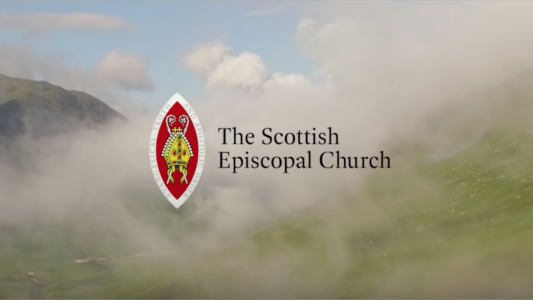All accounts for charities require to prepared in accordance with the Charities Accounts (Scotland) Regulations 2006. General guidance on the Regulations and information on the format and external scrutiny requirements for Scottish Charity Accounts can be found on the Charity Accounting page of the OSCR website (here). OSCR has produced a useful guide to the Regulations which has been updated to reflect changes made in 2011. It is available from the OSCR website (here).
What are the main changes?
The main change is that the gross income threshold for preparing receipts and payments accounts has increased from £100,000 to £250,000. The level of assets which a charity can hold before an audit is required has also increased from £2,800,000 to £3,260,000. There are also some changes to the definitions in the Charities Accounts (Scotland) Regulations. Most of the significant changes will affect accounting periods on or after 1 April 2011. For Charges this means that the first accounts which can take advantage of the increased the thresholds will be those for the year ending 31 March 2012 onwards. The accounts with a year-end prior to this date must be prepared in accordance with the existing regulations and where the receipts and payments accounts can only be prepared where the total income is less than £100,000.
How will the changes affect my charity?
If your charity’s gross income is between £100,000 and £250,000 you may now be able to prepare accounts on a receipts and payments basis. Previously, the lower threshold limit of £100,000 was too low for several Charges especially if they received large one-off legacies, grants or donations that took them above the limit for one year only but required them to prepare accounts on an accrued basis for that financial year. Hopefully, the increased threshold limit of £250,000 will avoid this problem in future years.
Receipts and Payments is a simpler form of accounting. The charity should consider if they want to change to this format of accounting. There are advantages in preparing accounts on a Receipts and Payments basis as they will be less onerous to prepare and be independently examined. It would be possible to appoint an independent examiner who is not a member of a professional body so there could be a potential saving in costs. However, the presentation of the accounts in this format might not suit the Charity Trustees and funders might also prefer that the accounts were examined by a professionally qualified examiner.
The General Synod Office issued an Accounts Pack during September 2007. There are no plans to amend the sample accounts included within the Pack as the main changes to the thresholds will not affect the layout and content of the sample accounts currently available for downloading from the Vestry Resources Section of the SEC website..
It is however worth noting again the following points when preparing the Receipts and Payments Accounts.
Front Cover
Should clearly state the name of the church, the accounting period covered and the charity reference number should appear in the top right-hand corner of the front cover.
Preface / Administrative Information
Should again show the name of the church and the charity reference number as well as the following:
- All Vestry members and their positions held within the Vestry during the accounting period and at the date the accounts are signed should be shown. The dates of arrival and departure of Vestry members during the period should also be shown.
(Note that the Charity Trustees are defined as “the persons having general control and management of the administration of a charity”. Within the SEC this will normally mean the Vestry are the Charity Trustees but if other members have this level of involvement then they should also be included on the list.)
- The name and address of the Independent Examiner and qualifications to undertake the examination
(Note that the Independent Examiner must be an individual rather than a firm.)
- The name and address of the bank
- The address of the church
- The address of the principal office if different
Annual Report of the Vestry (“Trustees’ Report”)
The Vestry members have an opportunity to provide the reader of this report with a good understanding of the Charge, its structure, recent achievements, financial performance and plans for the future. The narratives shown in the Sample Accounts should provide the Vestry with some assistance in preparing its report.
The headings shown in the accounts are a guide to what should be included and some Charges may find it helpful to use some of the wording provided in the Sample Accounts.
Some points to note:
Achievements and Performance
It is important for the Vestry to highlight what has been achieved during the year on a range of activities. However, there may be occasions when there has been an under-performance in an activity and the reasons for this should be stated e.g. a lack of volunteers
Financial Review
Voluntary income comprises regular giving by the Congregation, other donations and legacies. It would be helpful to show the fluctuations and explanations for increases /decreases from the previous year and details of legacies and income from fund raising activities. Donations /appeals for other charities should be stated.
Reserves Policy
The Vestry should state its reserve policy. If the Charge has large reserves then there will be interest in how these resources will be used or invested for use in the future. A separate heading could be included on investments. If the majority of the Church’s investments are held in the Scottish Episcopal Church Unit Trust Pool it could be stated that the investment policy of the Unit Trust Pool, is to earn a return on the assets, over the long term, sufficient at least to maintain the real value of the distribution to unit holders.
Statement of the Vestry Members’ Responsibilities
A formal statement of the Vestry’s responsibilities consistent with that provided in the Sample Accounts should be provided.
The Annual Report of the Vestry should be signed and dated on behalf of the Vestry by a Vestry member.
Independent Examiner’s Report
The standard wording from the guidance produced by OSCR should be used.
The Independent Examiner should sign and date the report.
Statement of the Receipts and Payments
Receipts and Payments Accounts are a simple form of accounting that consists of a summary of all incomes received and paid via the bank and in cash by the charge during its financial year, along with a statement of balances.
The Receipts and Payments Accounts must give sufficient detail to enable a member or other interested person to gain an appreciation of the transactions of the charge and of any surplus or deficit. It is also intended that the information shown in these accounts will be easily used to prepare the OSCR Annual Returns.
Separate columns should be included if there are restricted or endowment funds. The gross income from all the Charge’s Accounts must be shown in the Receipts part of the accounts. It is important not to net off expenditure against this income so all expenditure should be shown in the Payments part of the accounts. (Please refer to the notes below on Special Collections and Grouped/Linked Charges – Shared Costs; gross income will not include income from these sources.).
OSCR has stated the following definition in the Updated Scottish Charity Accounts Guidance of gross income. A Charity’s gross income is the total incoming resources of the charity in all restricted and unrestricted funds but excluding the receipts of any donated asset in a permanent or expendable endowment fund. Any income that has been collected specifically for, and passed onto, a third party (e.g. that part of a membership fee that is passed onto a parent body, or a collection held for another charity) should be excluded. However, the transferred amount should be recorded by way of a note to the accounts.
The notes to the accounts should provide a more detailed breakdown on the income and expenditure items within each heading as shown in the accounts.
Note that other Donations could include donations for the use of halls and weddings and funerals. Legacies and grants should be shown separately and state if they are restricted.
Special collections
The income and expenditure in connection with special collections to raise funds for another charity or organisation and individuals should appear only in a note in the accounts. The related gift aid tax recovered from the special collections should also only be included as part of the income received in this note to the accounts. It is important to pay the money over quickly to the charity benefiting from the special collections – if that is not possible an explanation should be provided on the delay in payment in the note to the accounts.
It the church decides to make a special donation or gift to other charities from its own funds then this expenditure should be shown in the Receipts and Payments Account with a note detailing the charities benefiting from these donations.
Grouped / Linked Charges – Shared Costs
The actual total payment made by the charge towards shared costs (such as stipend and maintenance of rectory) should be stated in the Accounts – stating that it is a contribution towards shared costs. A note in the accounts should state the total cost incurred on each shared cost expenditure item along with the basis of allocation to each charge in the linked or joint charge. All the congregations in the grouped /linked/ charge should state the same information in a note in their accounts.
The charge that incurs the expenditure and recovers the contributions from the other charges should again only show their own contribution towards the shared costs in their accounts. The amounts recovered from/paid by the other charges will not be included in their gross income figures.
The Statement of Balances
The Statement of Balances must reconcile the bank and cash balances at the beginning and end of the year with the surplus or deficit shown in the Receipts and Payments Account. Information regarding the assets held by the church and details of any significant liabilities at the year- end must also be shown.
It should be noted that investments should be shown at market value with unrealised gains or losses detailed.
Within the unrestricted funds, there may also be designated funds. These are reserves which have been ‘earmarked’ for specific purposes.
Separate columns may be required to show on the Statement of Balances the balances held for a number of unrestricted and restricted funds.
The Statement of Balances should be signed and dated on behalf of the Vestry by a Vestry member.
Notes to the Accounts
The Notes expand on or explain the information contained in the statements of receipts and payments and balances and will help the reader understand the accounts. The notes should be transparent and clear to the reader. It may therefore be appropriate to explain what is meant by some specific Scottish Episcopal Church receipts and payments e.g. quota payments. It is also important to demonstrate that the Charge has dealt with receipts in line with the expectation of the members and donors e.g. receipts for charitable giving have been dispersed appropriately.
The Notes to the accounts should contain the following information, unless it has been provided in the Annual Report of the Vestry:
- The nature and purpose of the different funds held by the Charge, including any restrictions on their use
- The number, amount and purpose of any grants paid out or received
- The amount of remuneration paid to a charity trustee or person connected to the Charge
- The total amount of expenses paid to charity trustees and the number of charity trustees expenses. If no expenses were paid this must be stated
- The nature of any transaction between the charity and any charity trustee or person connected
- The comparative figures for the previous year should be stated on the same basis (figures may have to be re-stated)
Specific notes might be required on shared costs and special collections.
Valuation of buildings
The Vestry should state that is considers it inappropriate to include a market valuation for the church building and the rectory in the financial statements on the grounds that the cost of obtaining such valuations outweighs the benefit to users of the accounts. It would however be helpful to state their insurance valuations in the Notes
Annual Return and Supplementary Return Forms
OSCR will issue an Annual Return form and Supplementary Monitoring Return form (if the charity has a gross income is in excess of £25,000) to each charity shortly after the charity’s year end date. These returns and accounts can be submitted online if the charity is registered for the online service with OSCR. The charity must ensure that the accounts are prepared, signed and independently examined in the usual way prior to the online forms being submitted to OSCR. Signed accounts can either be scanned and attached to the online submission, or sent to OSCR in hard copy by post. It is still possible for the charity to complete a paper version of the Return Forms and send them along with a signed copy of the accounts in the post to OSCR.
The OSCR website provides details of their annual monitoring programme for charities (here)
Guidance has been issued by the General Synod Office to assist Charges in the completion of the Return forms a copy of which is available from the Vestry Resources section of the SEC website.
The Annual Return / Supplementary Return Forms and a signed copy of the accounts must be sent in the post or processed on-line to OSCR within 9 months of the charity’s financial year end date.
May 2012
The General Synod of the Scottish Episcopal Church does not accept responsibility for any loss or liability which may arise from reliance on information or expressions of opinion contained in this document.
General Synod of the Scottish Episcopal Church
Scottish Charity No SC015962







